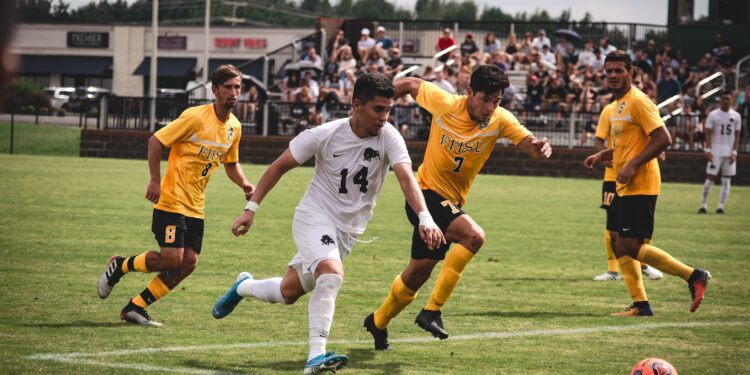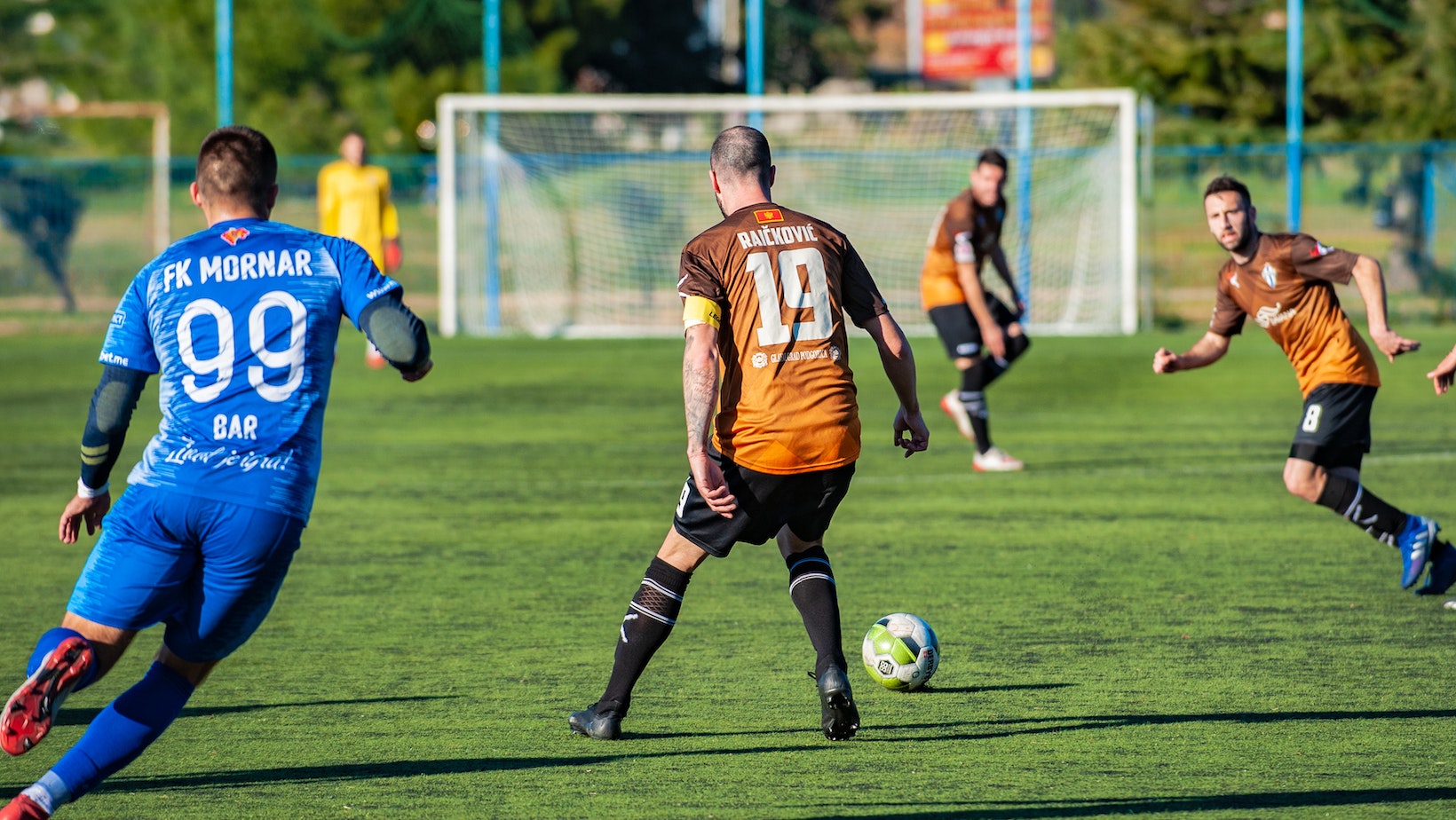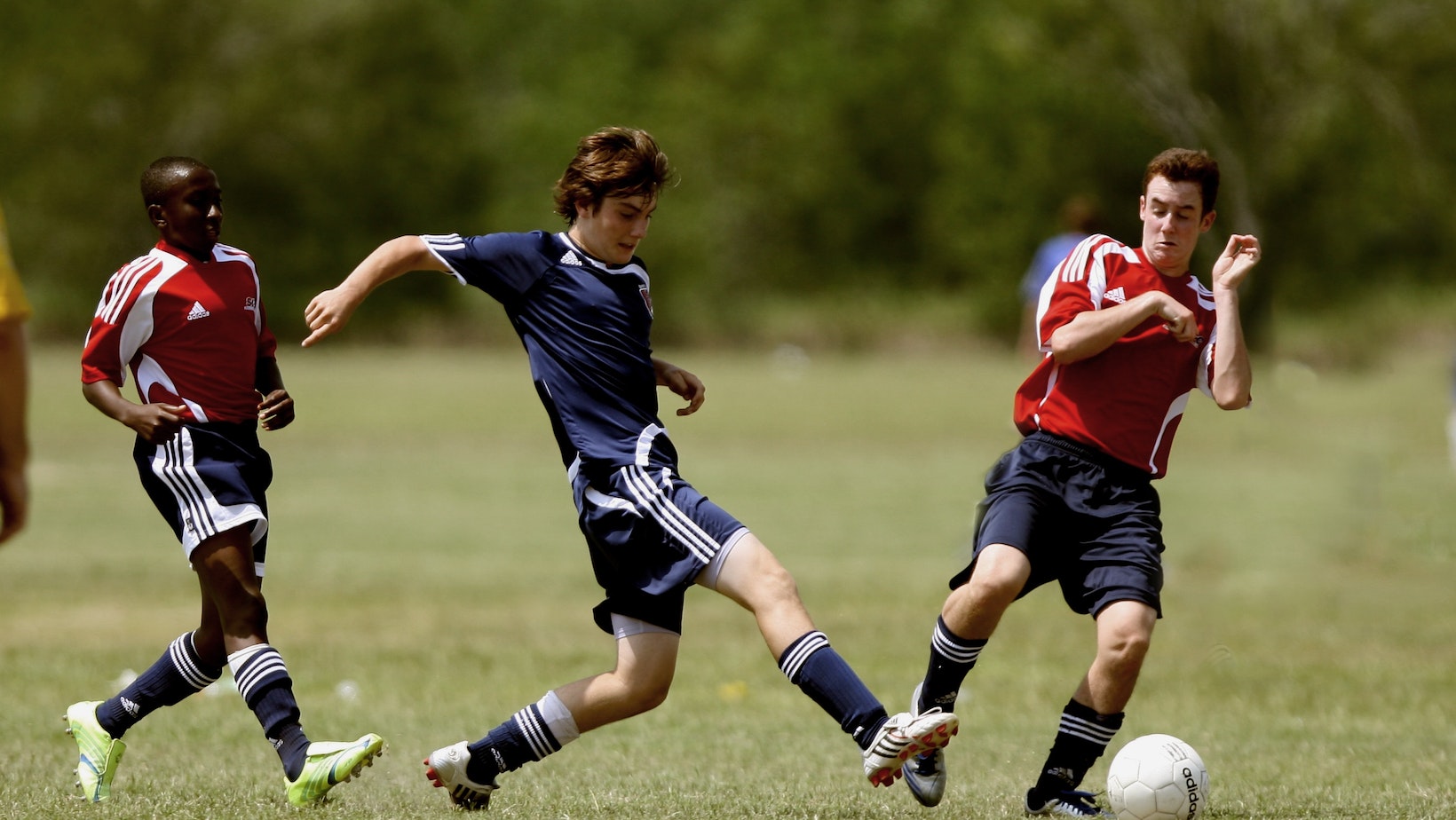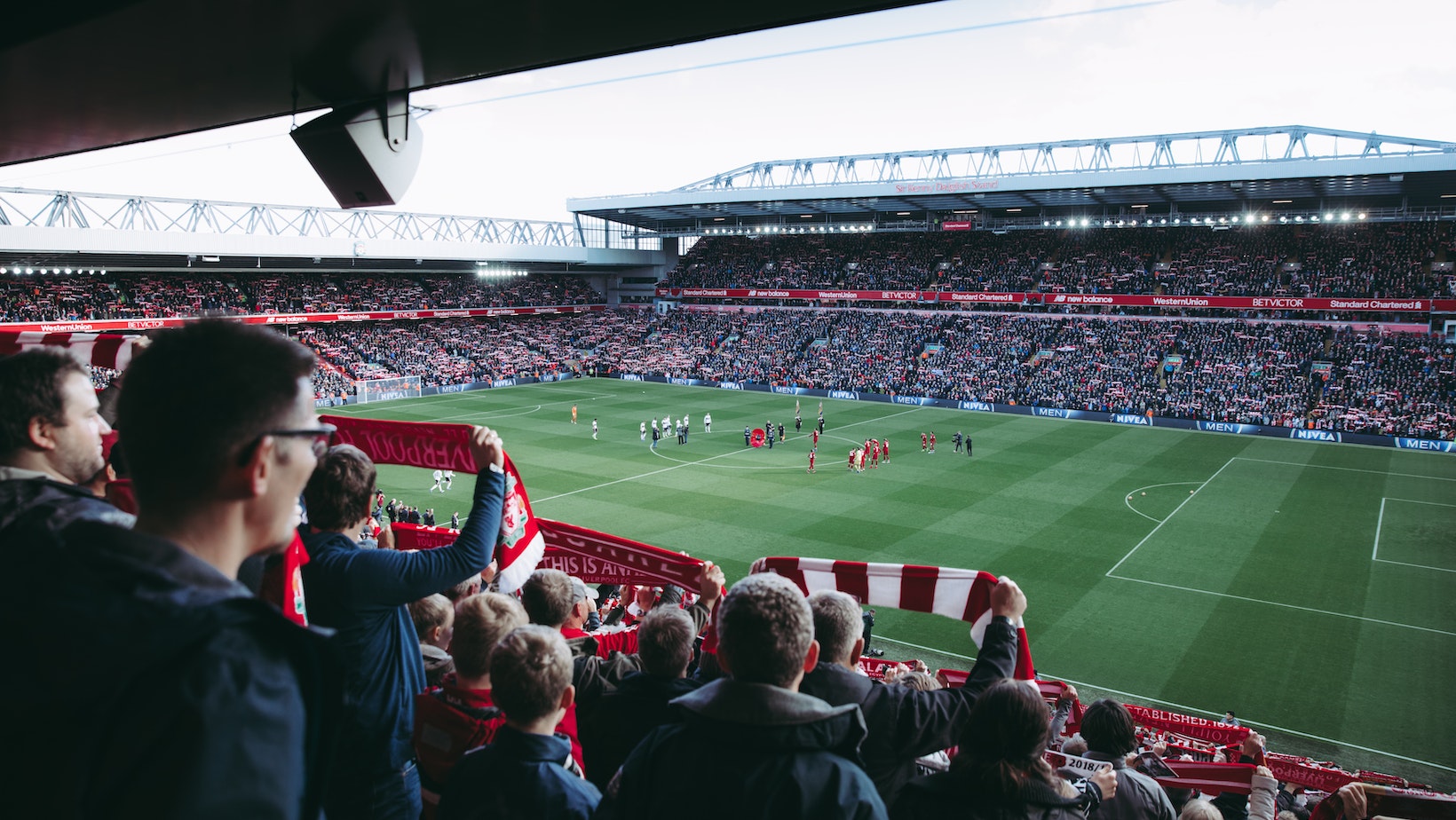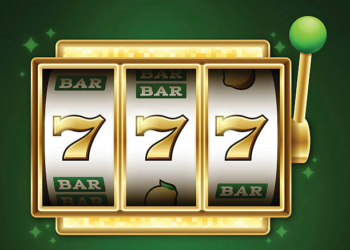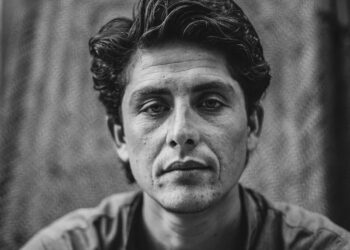Soccer is a sport that requires different positions to form a cohesive team. Each position has a specific role and set of responsibilities that contribute to the overall success of the team.
Here are some of the main positions in soccer:
Forward: The primary goal of a forward is to score goals by taking shots on the opposing team’s net. They are typically the most offensive players on the team.
Midfielder: Midfielders play a diverse role on the team, balancing both defensive and offensive duties. They are responsible for controlling the ball and passing it to the forwards.
Defender: The primary goal of a defender is to prevent the opposing team from scoring. They play a crucial role in defending the team’s goal while also assisting with ball control.
Goalkeeper: The only player on the team allowed to use their hands, the goalkeeper’s primary role is to prevent the opposing team from scoring by blocking shots and catching the ball.
Pro Tip: Knowing the different positions in soccer can help you understand the sport better and appreciate the role each player has in contributing to the team’s success.
Offensive Positions
Soccer is a demanding and exciting sport, requiring that a team be solid in all areas of the field. This includes on offence, where there are several key positions that are essential to a team’s success.
From strikers to attacking midfielders, each offensive position brings its own unique set of skills and responsibilities to the field. Let’s take a closer look at the different offensive positions in soccer.
Partidos de selección de fútbol de Argentina contra selección de fútbol de Arabia Saudita
In soccer, the position of striker is one of the most important offensive positions. Strikers are responsible for scoring goals and creating opportunities for their teammates to score. Their main job is to position themselves within scoring range and quickly and accurately shoot the ball into the net.
Strikers need to have excellent ball control, speed, and agility to move past the defenders and create opportunities for their team. In addition to scoring goals, they also need to have good passing skills to assist their teammates in scoring.
Strikers work in tandem with other offensive players such as midfielders and wingers to create and capitalise on scoring chances. A good striker can make all the difference in a soccer game, and having a skilled and well-trained striker is often key to a team’s success.
Selección de fútbol de España partidos
In soccer, the offensive positions are essential to scoring goals and winning games. There are several different positions on the offensive line, and each has a specific role to play during a match.
A few of the most common offensive positions in soccer include:
Forward: Forwards, also known as strikers, are the primary goal-scorers on the team. They typically occupy the area closest to the opponent’s goal and use their speed and agility to manoeuvre around defenders and score. Depending on the team’s formation, there may be one or two forwards on the field.
Winger: Wingers, also known as outside forwards, are responsible for advancing the ball along the sidelines and delivering crosses into the box. They typically operate on either side of the field and use their speed and precision to outrun defenders and set up scoring opportunities for their teammates.
Attacking Midfielder: This position is responsible for linking the forwards and midfielders and creating scoring chances. Attacking midfielders are often the creative brains of the team, using their passing and dribbling skills to break through the defence and set up their teammates for goals.
While each offensive position requires distinct skills and abilities, the ultimate goal is always the same: to score as many goals as possible and secure a win for the team.
Partidos de selección de fútbol de Camerún
In soccer, a winger is an offensive position played by a forward player who operates on the sides of the field, typically near the touchline.
The winger is responsible for creating goal-scoring opportunities by using their speed and technical abilities to outrun the defenders, cross the ball into the box or cut inside and take a shot on goal.
There are two types of wingers, left winger and right winger, depending on which side of the pitch they play on.
The role of a winger can vary depending on the team’s tactics, but the primary aim is always to attack and score goals. Wingers must be agile, quick, and have excellent ball control, crossing, and shooting skills to excel in this position.
Pro Tip: Wingers can be a game-changer in a soccer match if used wisely by coaches.
Partidos de selección de fútbol de Colombia
The attacking midfielder is a crucial offensive position in soccer, responsible for linking the defence to the attackers and creating scoring opportunities for the team.
This position requires a player who is highly skilled in passing, dribbling, and shooting, and who possesses excellent vision and game intelligence.
An attacking midfielder typically plays behind the forwards and in front of the central midfielders, often operating in the “number 10” role.
The role of an attacking midfielder is to create chances for the forwards, exploit gaps in the defence, and control the tempo of the game.
Some of the best attacking midfielders in soccer history include Zinedine Zidane, Diego Maradona, Michel Platini, and Lionel Messi.
Midfield Positions
In soccer, midfielders are players who occupy the middle of the pitch, the central area between attacking players and defenders. Midfielders typically have strong control of the ball, and can be used for passing and linking with the attacking players upfield.
Let’s take a deeper look into the specific roles played by midfielders.
Partidos de selección de fútbol de Alemania
The central midfielder is a crucial position in soccer, as they are responsible for dictating the pace of the game, controlling possession, linking the defence to the attack, and supporting both offensive and defensive duties. This position requires players to have excellent ball control skills, a good sense of positioning, and vision to make quick and accurate passes. Some of the qualities that make a good central midfielder include endurance, physicality, tactical awareness, and intelligence.
Central midfielders are typically deployed in a 4-3-3 or 4-4-2 formation, and their primary responsibilities include:
- Receiving the ball from the defence or other midfielders and redistributing it to attackers
- Win possession back from the opposing team
- Control the pace and tempo of the game by holding onto the ball
- Develop attacking play and create chances for forwards
- Support the defence by tracking back and breaking up enemy attacks
A good central midfielder can make a significant difference in a team’s overall performance and success in a given match.
Partidos de selección de fútbol de Argentina Mundial
A defensive midfielder is a crucial position in the midfield, acting as a shield for the backline and helping to initiate attacks from the middle of the pitch.
The defensive midfielder is responsible for:
- Breaking up opposition attacks with interceptions and tackles.
- Providing a passing option for the defenders and midfielders.
- Distributing the ball forward to the attacking players.
- Generally playing a more defensive role, but able to move forward to support attacks if needed.
- Having good positional awareness and tactical understanding of the game.
The role of a defensive midfielder is important as it involves protecting the team’s defensive line, while also creating opportunities for the attacking players through quick, accurate distribution. In short, they act as a bridge between the defensive and attacking units of the team.
Pro Tip: A good defensive midfielder possesses excellent ball control, passing ability, and physical stamina to cover large amounts of ground over the course of a game.
Wide Midfielder
One of the positions in soccer’s midfield is the Wide Midfielder. The objective of a wide midfielder is to provide both offensive and defensive support for their team in the wide areas of the field.
Here are some key responsibilities of a wide midfielder:
Offensive Support: A wide midfielder is responsible for providing crosses into the box or making runs into the attacking areas to create scoring opportunities for their team. They can also be responsible for taking set-pieces such as corners and free-kicks.
Defensive Support: A wide midfielder must work together with the full-back to prevent opposition attacks from the flanks.
Physical Demands: Due to the wide range of responsibilities, a wide midfielder must have excellent stamina, speed and agility to cover large distances up and down the field.
Examples of top Wide Midfielders include Arjen Robben and Franck Ribery of Bayern Munich, and Ryan Giggs of Manchester United.
Pro Tip: While the Wide Midfielder’s primary function is providing width and attack from wide areas, their role also includes tracking back defensively and closing out opposition attackers. It’s essential to master both the defensive and offensive sides of their role to be a successful Wide Midfielder.
Defensive Positions
When it comes to defensive positions on the soccer pitch, there are a variety of roles and responsibilities. Defenders are the back line of defence and the last line of defence before the goalkeeper. They are tasked with preventing the attack from advancing and ensuring the ball stays out of their goal.
In this section, we’ll discuss the different types of defensive roles and what their unique responsibilities are.
Centre Back
In soccer, the centre back is a defensive player whose responsibility is to protect the goal and prevent the opposing team from scoring. The centre back position is located in the middle of the defensive line and is considered the most crucial position in the defence.
Centre backs are responsible for communicating with other defenders, intercepting passes, clearing the ball, and marking opposing strikers to prevent them from scoring goals. They are also required to have excellent tackling skills and be comfortable with the ball at their feet to initiate attacks from the defence.
A good centre back can be the difference between winning and losing a match. Therefore, this position is given special attention in soccer tactics and player recruitment.
Pro tip: The centre back position requires physical strength, speed, and agility. It is highly recommended to undergo a specific training program aimed at developing these qualities to excel in this position.
Full Back
The Full Back position is a defensive position in soccer, typically played by two defenders.
The Full Back positions are:
Right Back (RB): The right-side defender who is responsible for stopping opposing players from attacking down the left side of the field.
Left Back(LB): The left-side defender who is responsible for stopping opposing players from attacking down the right side of the field.
Full Backs are expected to work in tandem with the Center Backs, protecting their own goal and creating counter-attacking opportunities for their team by pushing forward and supporting their team’s wingers.
The Full Backs are also expected to possess strong tackling and crossing skills, as well as being able to play out from the back and support the team’s attacking play.
Wing Back
A wing-back is a defensive position in soccer that involves playing on the flank and assisting in both defensive and offensive play. They are positioned between the central defence and midfield and are responsible for marking opposing wingers, making overlapping runs, and sending crosses into the box.
A wing-back has to be fast, agile, and have excellent stamina to cover a lot of ground on the flank. They must also have good technical and defensive skills to effectively carry out their duties.
Some famous wing-backs include Philipp Lahm, Cafu, and Javier Zanetti.
The wing-back position is commonly used in a 3-5-2 formation or a 5-3-2 formation, where there are three centre-backs, two wing-backs, and three or two midfielders, respectively.
Goalkeeper
The goalkeeper is arguably the most important position in soccer. Their main role is to protect the goal from opposing players and to stop the ball from entering the goal. The goalkeeper is also the last line of defence and can help their team to gain an advantage when defending against their opponents.
Let’s take a look at what other roles the goalkeeper has.
Responsibilities
The goalkeeper is one of the most critical positions in soccer, responsible for protecting the goalpost and preventing the opposing team from scoring.
Their primary responsibilities include:
Shot-stopping: The goalkeeper must be agile and quick to dive, jump, or catch the ball to stop the opposing team from scoring.
Ball distribution: Goalkeepers need to be skilled at kicking, throwing, or rolling the ball to their teammates to start a counter-attack or build-up play.
Communication: As the last line of defence, the goalkeeper must be vocal and alert their teammates of any incoming threats and offer guidance on positioning and defensive strategy.
Organisation: They need to organise the defence line, maintaining a cohesive and compact backline to defend the goalpost.
Sweeper-keeper: Some goalkeepers are required to play a more aggressive role, rushing out of the penalty box to clear the ball or challenge the opposing team’s forwards.
Goalkeepers play a crucial role in the game, and their performance can often determine the outcome of a match.
Key skills and physical attributes
Goalkeepers require a unique set of skills and physical attributes that set them apart from the other positions in soccer.
Some of the key skills required for goalkeeping are:
Agility: Goalkeepers must be able to move quickly and change direction easily to defend the goal.
Hand-eye coordination: A critical skill for goalkeepers, as they must be able to catch, block, and punch the ball with precision.
Spatial awareness: This is essential for goalkeepers to move effectively within the goal area and make accurate judgments about ball trajectory.
Shot-stopping ability: This involves not only quick reflexes but also good judgement, as the goalkeeper must choose the right moment to make a save.
Some of the key physical attributes required for goalkeeping are:
Height: A taller goalkeeper can more easily reach high balls and cover a larger area of the goal.
Strength: This is important both for handling the ball and for withstanding collisions and challenges from opposing players.
Coordination and balance: Goalkeepers need to have a strong sense of balance to move quickly and establish stable footing.
Quick reaction time: This allows a goalkeeper to make saves and react to changing game situations.
Key terms and concepts in goalkeeper play
Goalkeeper play involves various key terms and concepts that every aspiring goalkeeper needs to master to succeed in soccer. Here are some of the essential concepts to understand:
Positioning: A goalkeeper should always position themselves correctly to cover as much of the goal as possible.
Shot-stopping: Shot-stopping is the ability to save a shot on goal using various techniques like catching, punching, or blocking the ball.
Distribution: Distribution refers to a goalkeeper’s ability to make accurate and quick passes to their teammates to initiate an attack.
Communication: Communication is crucial for goalkeepers, as they need to have a clear and assertive voice to direct their team’s defence and alert teammates of opposing team movements.
Set Pieces: Set pieces refer to the plays that occur after a foul or corner and require goalkeepers to position themselves effectively and prepare for a potential shot on goal.
Understanding these concepts and using them effectively can help goalkeepers play their position better and contribute to their team’s success on the pitch.


